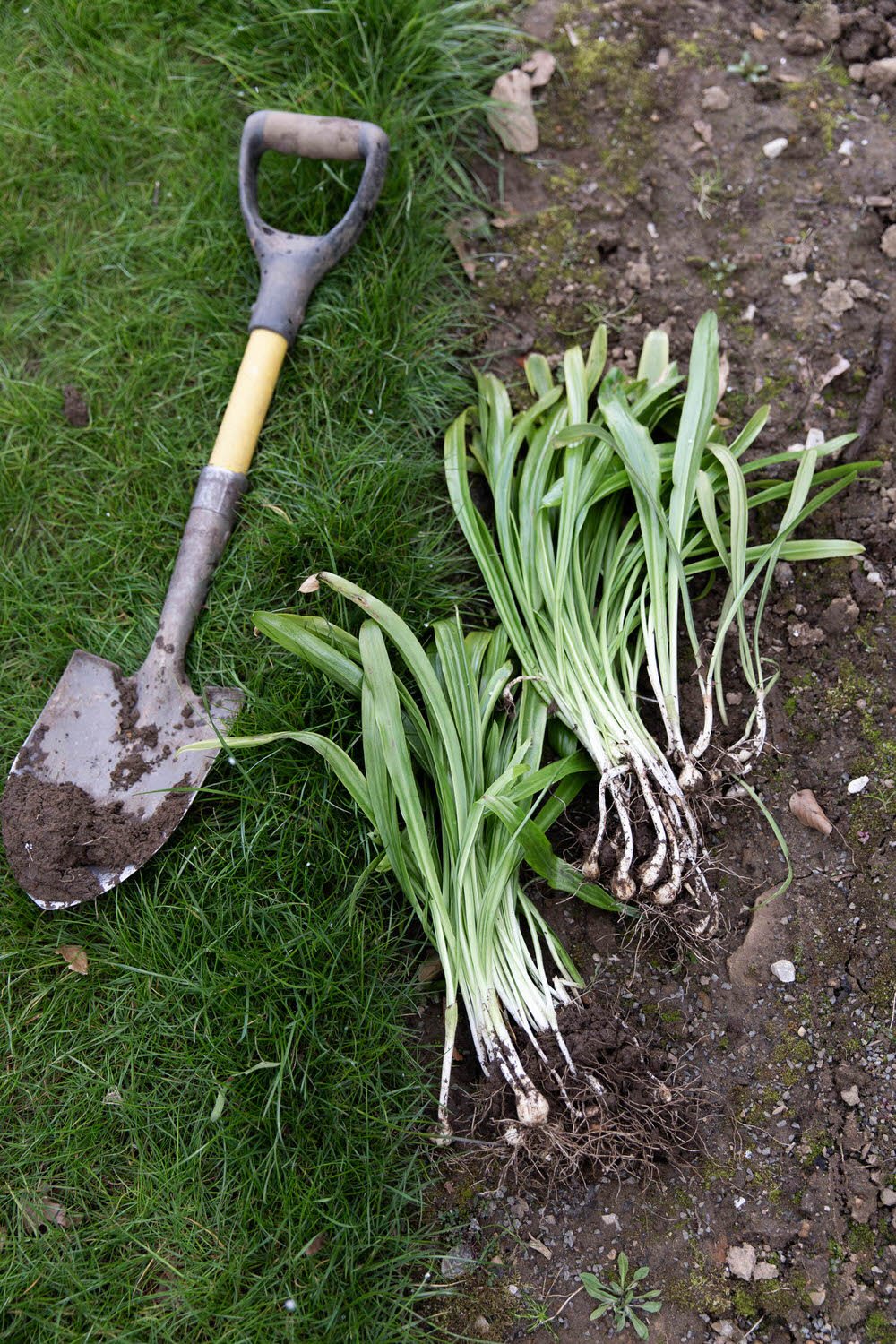How to plant bulbs in a lawn
We’re huge fans of a bulb lawn: an area of grass where Spring bulbs are naturalised among the turf, ready to appear as the weather gets warmer, putting their heads above the blades of grass and bringing extra pops of colour.
Bulb lawns look great in almost all gardens. You can dedicate a particular area of the grass for them, or go wild and fill the whole lawn! They’re really easy to plant, take very little maintenance, and last for years, growing with more and more flowers each time.
Here are our top tips to get started…
Snowdrops ready to be planted “in the green”
Which bulbs are best for planting in grass?
When choosing bulbs that will grow well in a lawn, there are a few things to bear in mind.
If you’re planning to mow the lawn later in the year, the bulbs need to flower early and the foliage to die back before you mow. This ensures that the bulbs will flower the following year (if you mow too early and cut off all the green leaves on a bulb, it can mean the plant hasn’t had enough time to put the energy back into the bulb for the dormant months and will likely grow “blind” the next year, in other words without flowering.) So, early Spring bulbs are the best.
When planting bulbs in lawns, we want them to “naturalise” – that is, to grow back year after year, adding new flowers as they do and forming clumps over time. Some popular bulbs, such as tulips, don’t do well in UK soils over a long period of time, so will die off rather than naturalise. Picking bulbs that can cope with the wet and damp conditions over the Winter months is really important.
You want relatively low growing bulbs, that won’t need supporting and won’t flop over. Some taller bulbs are not suitable for this reason.
Taking all this into account, these are some of our favourite bulbs to grow in lawns:
Almost all types of crocus will grow well in grass
Daffodils, particularly shorter varieties such as ‘Minnow’ and ‘Tete a Tete.’ Larger daffodils also do well, we have ‘Thalia’ and ‘Actaea’ growing in our lawn.
In damper areas, fritillaries grow very well. We love the snakeshead fritillary (Fritillaria meleagris) with its purple chequered petals.
Snowdrops are one of the earliest flowers to appear in Winter and will peep out over the top of the grass.
Another low-growing bulb, Muscari, or grape hyacinth, come in blues, whites or pinks, and looks very sweet in clumps among grass.
Along with the daffodils in our turf, we have some beautiful spires of Camassia which look amazing in late Spring.
Chionodoxa is a small plant with star-shaped flowers, often with white centres. It does well in part shade, so is good for sections of lawn that fall under the shadow of trees or buildings for part of the day.
Similar in appearance to chionodoxa, the tiny delicate flowers of scilla naturalise easily and look great in clumps. Again, happiest in part shade.
But remember, it’s also fun to experiment! Try out other bulbs that are advertised as being good at “naturalising” or just have a go with something you think looks beautiful. If it doesn’t work this year, you can always make some changes next year…
Camassia and daffodils growing in our lawn
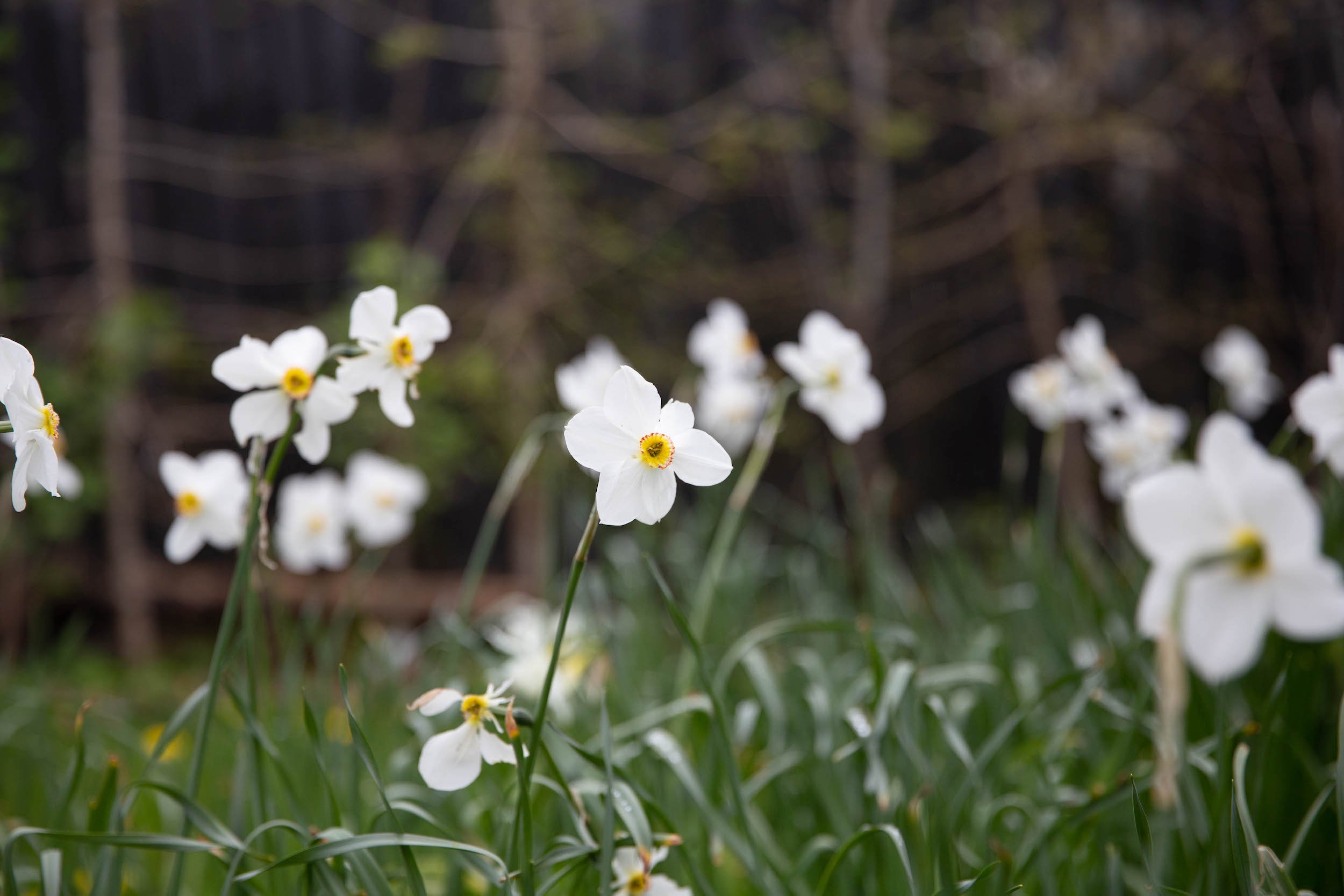
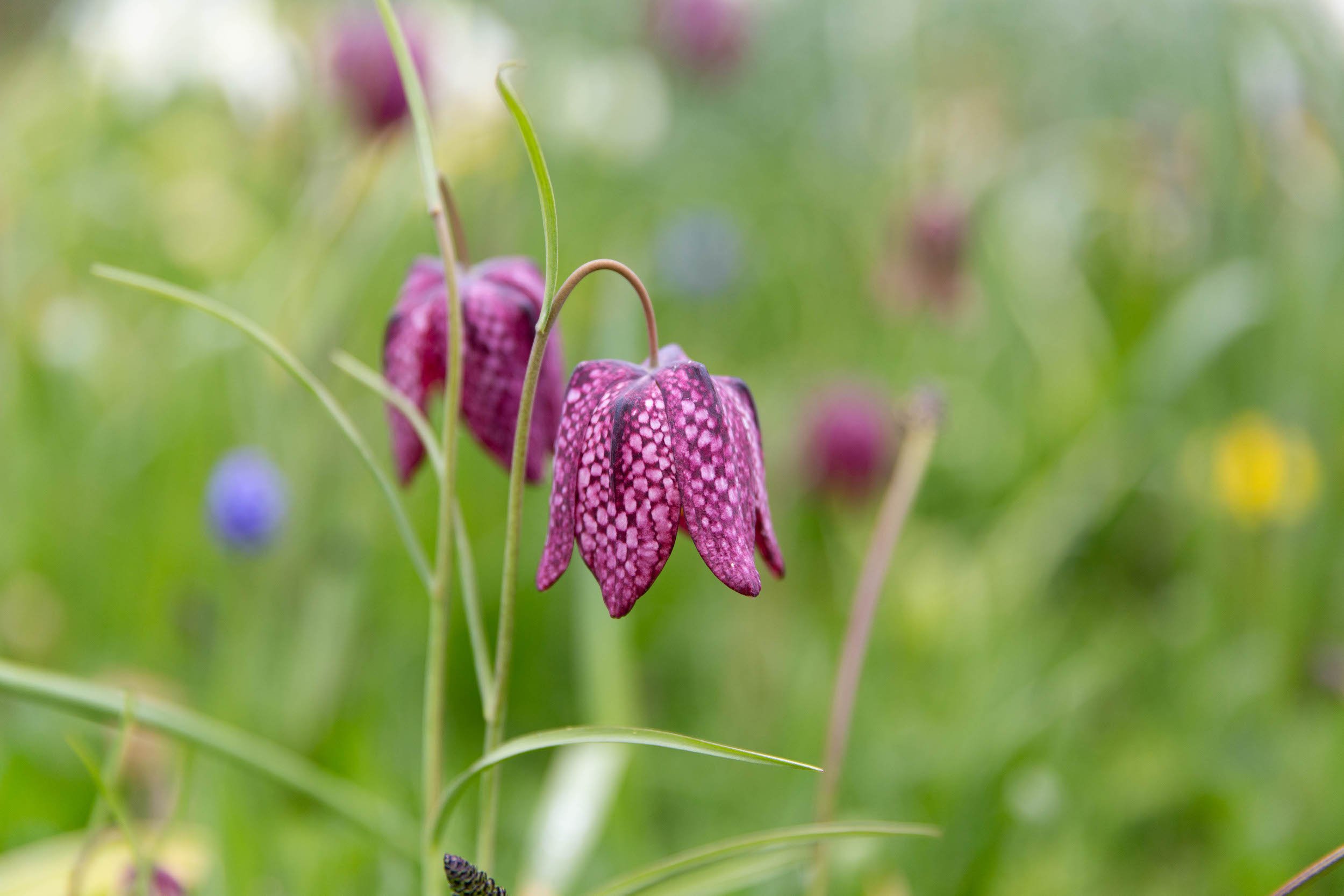
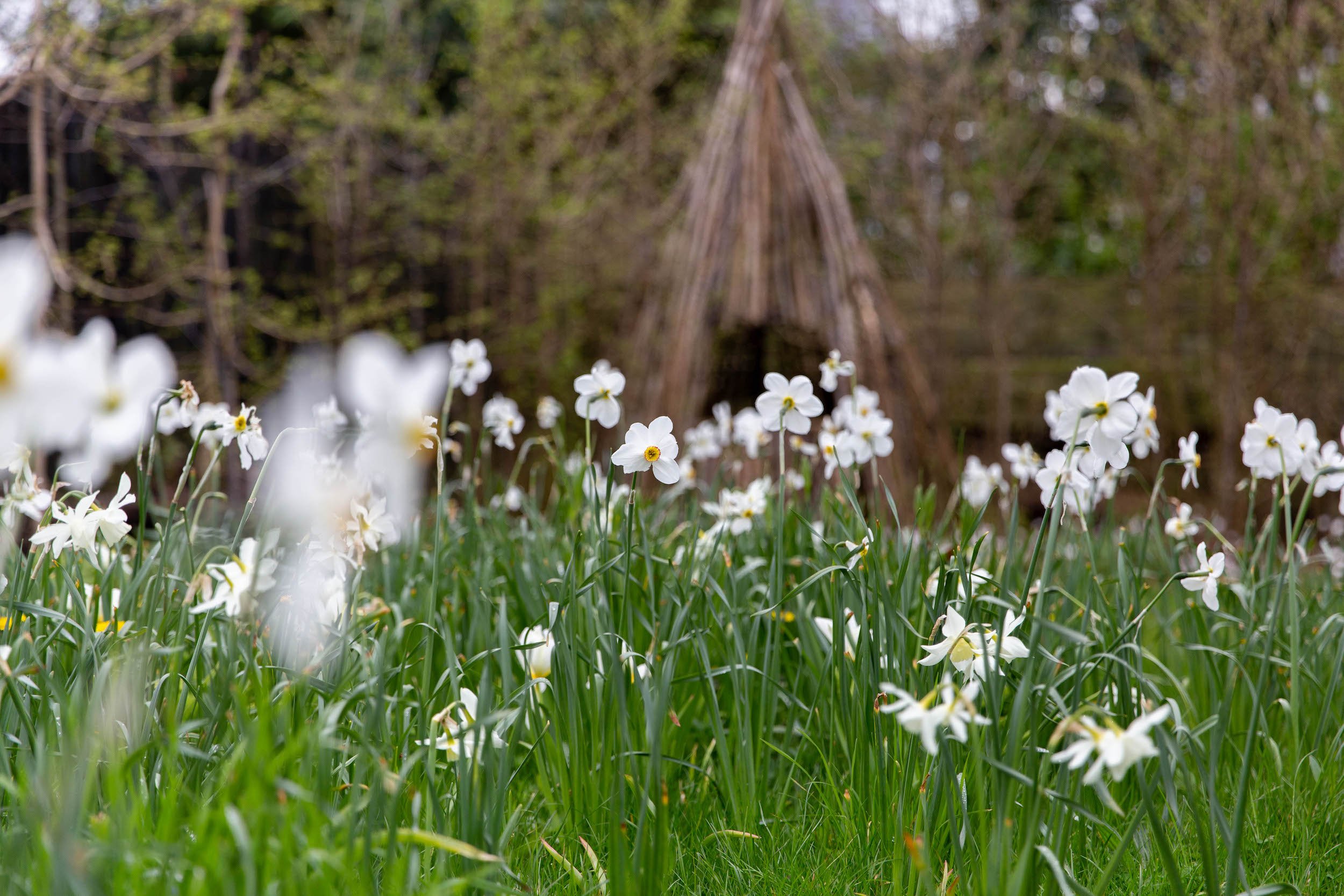
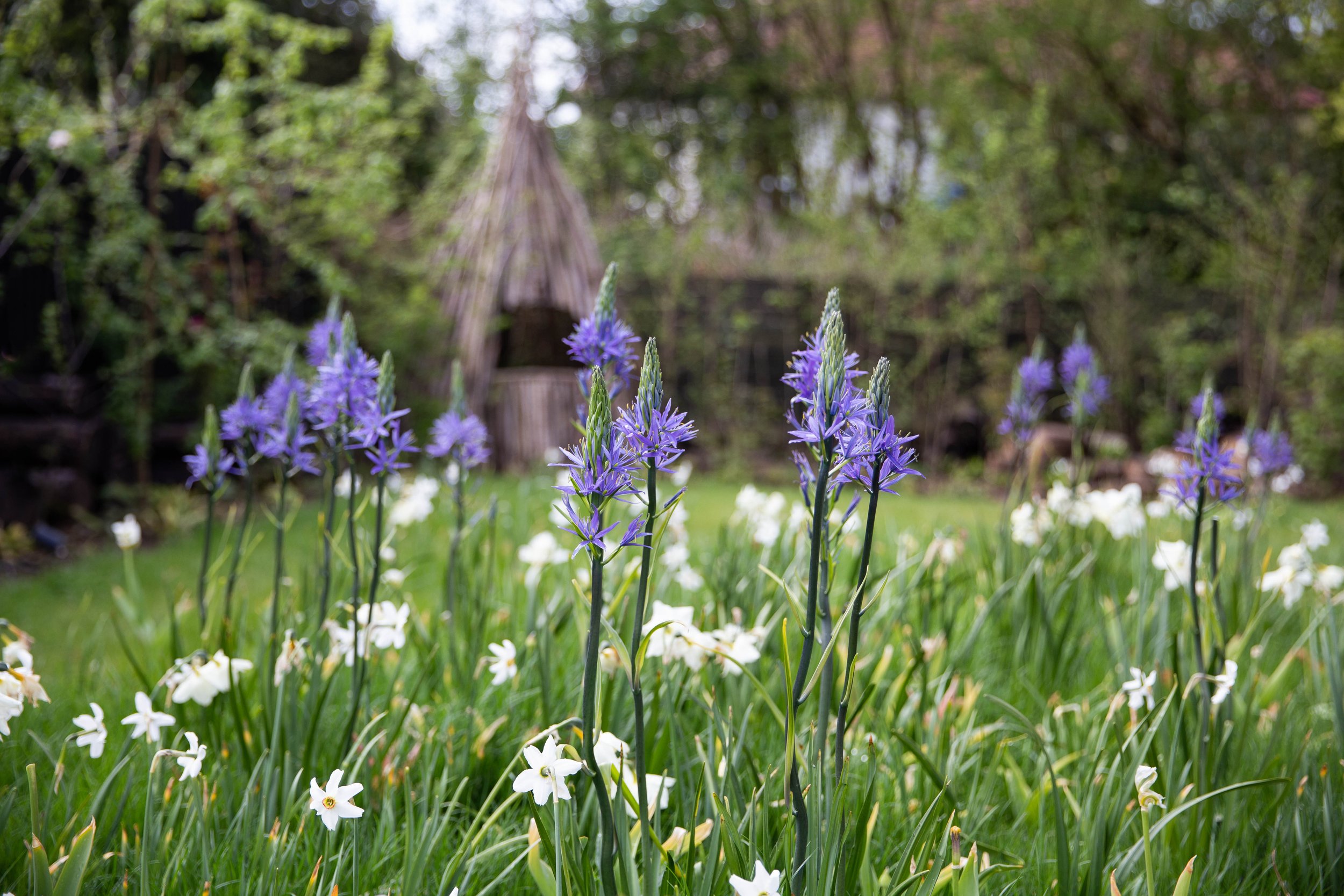
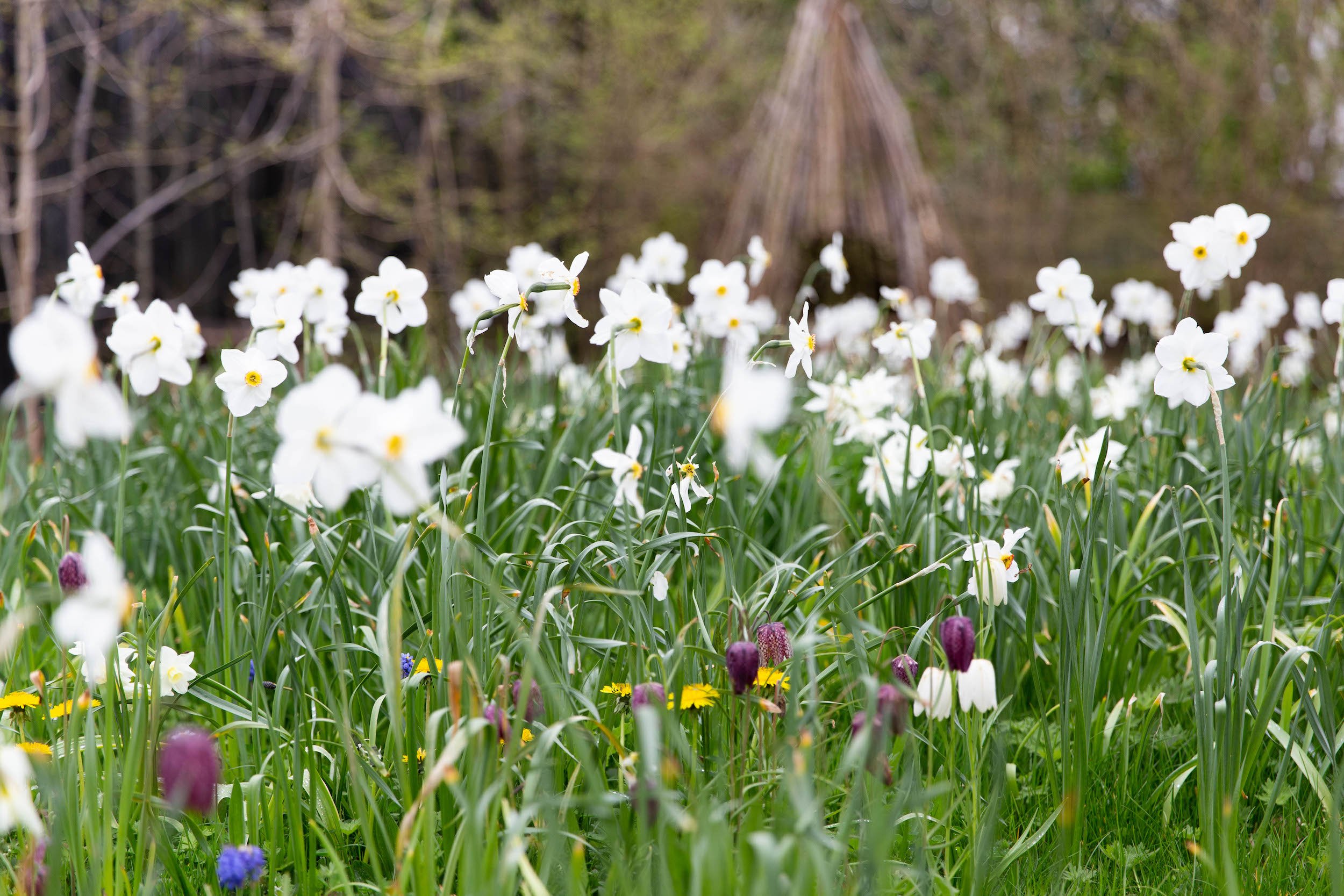
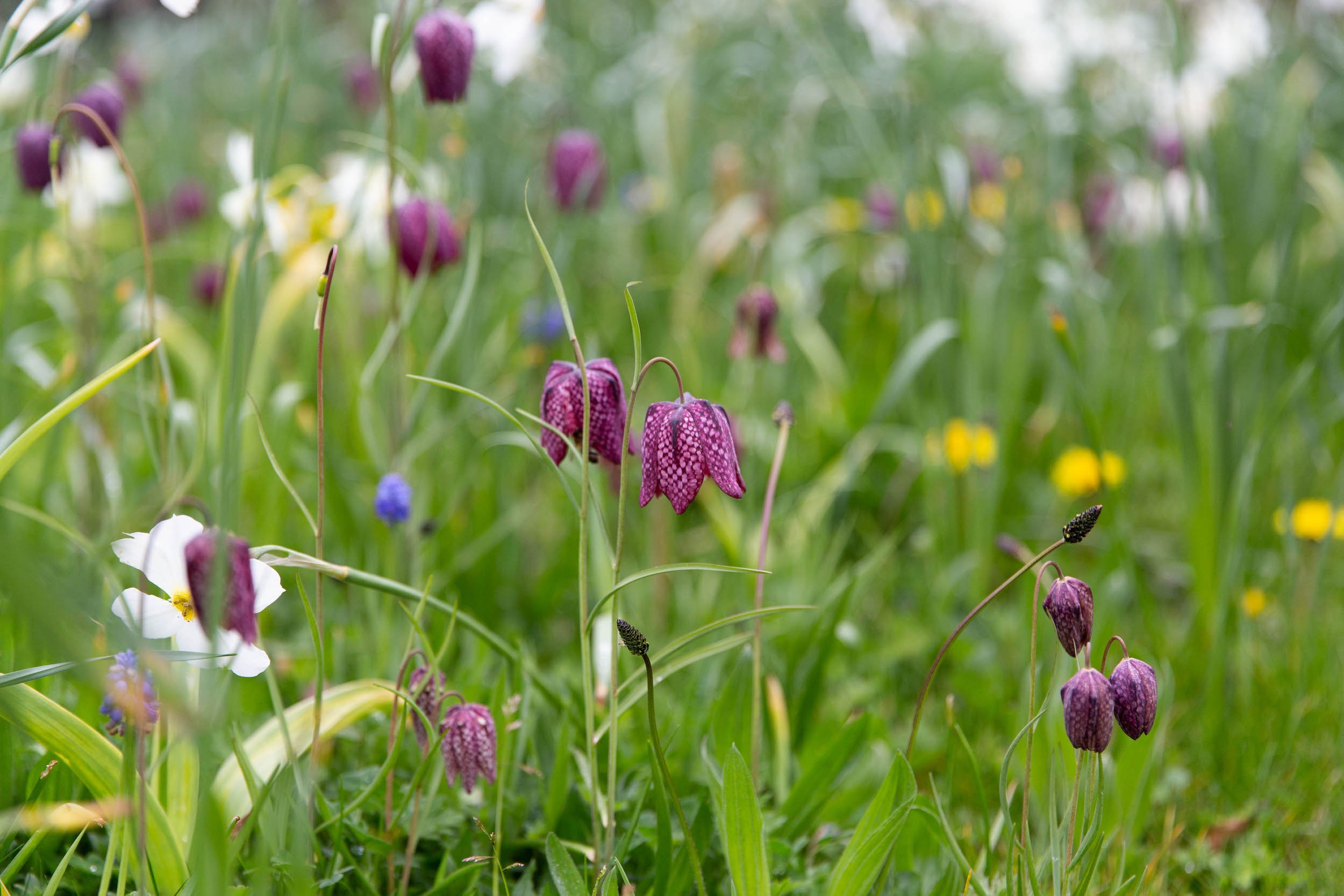
When to plant the bulbs?
For all Spring flowering bulbs, plant in the Autumn. October time is usually ideal, as long as the ground isn’t waterlogged or freezing.
For any Autumn flowering bulbs (such as colchicum, the Autumn flowering crocus) the planting time is in the Spring.
How to plant the bulbs?
It’s really crucial that the bulbs look natural – as if they had just popped up on their own – so avoid straight lines or artificial-looking regular layouts! A great way to get a natural layout is to throw a handful of bulbs out, and just plant them exactly where they land. (Avoid the temptation to neaten them up or spread them out more regularly!)
It’s easier to plant on short grass, so give the lawn a mow in early Autumn.
On existing lawns, it’s easiest to use a bulb planter. This will pull out a plug of soil, with the turf still on top. You put the bulb into the bottom of the hole and then replace the plug of soil, turf and all. If you’re planting a large drift, you could cut up a section of turf, along three sides of a square, roll it back to position the bulbs on the soil, then push it back in place.
On new lawns, you can place the bulbs directly onto the soil and lay the turf on top of them, taking care not to stand on or squash any bulbs as you go.
Snowdrops are the exception, as these perform best if planted “in the green” — the period after the flower has died but before the leaves die back.
All bulbs, no matter what plant they are from, should be planted with the pointy end up. Plant a group of bulbs quite close together, to make a drift, or clump, but ensure that the bulbs don’t touch each other. A rough guide to getting the right depth for the bulb is to make sure it is put in the soil three times the depth of its height. (In other words, a bulb that is about 3cm tall, would be planted 9cm deep…)
Water after planting to help the bulbs get established and for the grass roots to reattach quickly.
For more on planting bulbs, see our guide how to plant bulbs.
What about mowing?
It’s a common misconception that lawns with bulbs in can’t be mown. It’s fine to mow the lawn, as long as the plant’s flowers or leaves aren’t still out. Wait for both the flower and foliage to die back down – it will turn yellow and then shrivel up – and once this has happened, you can mow the area.
Ongoing maintenance
If planted in Autumn, then the bulbs shouldn’t need any extra watering, as long as there aren’t any extensive dry spells.
Once in the ground, all bulbs that naturalise easily will just get on with doing their thing, so won’t need any extra care to grow well.
Some bulbs that clump up quickly may need dividing every few years if any areas start to get too congested, but apart from that, they can just be left to get on with it!


